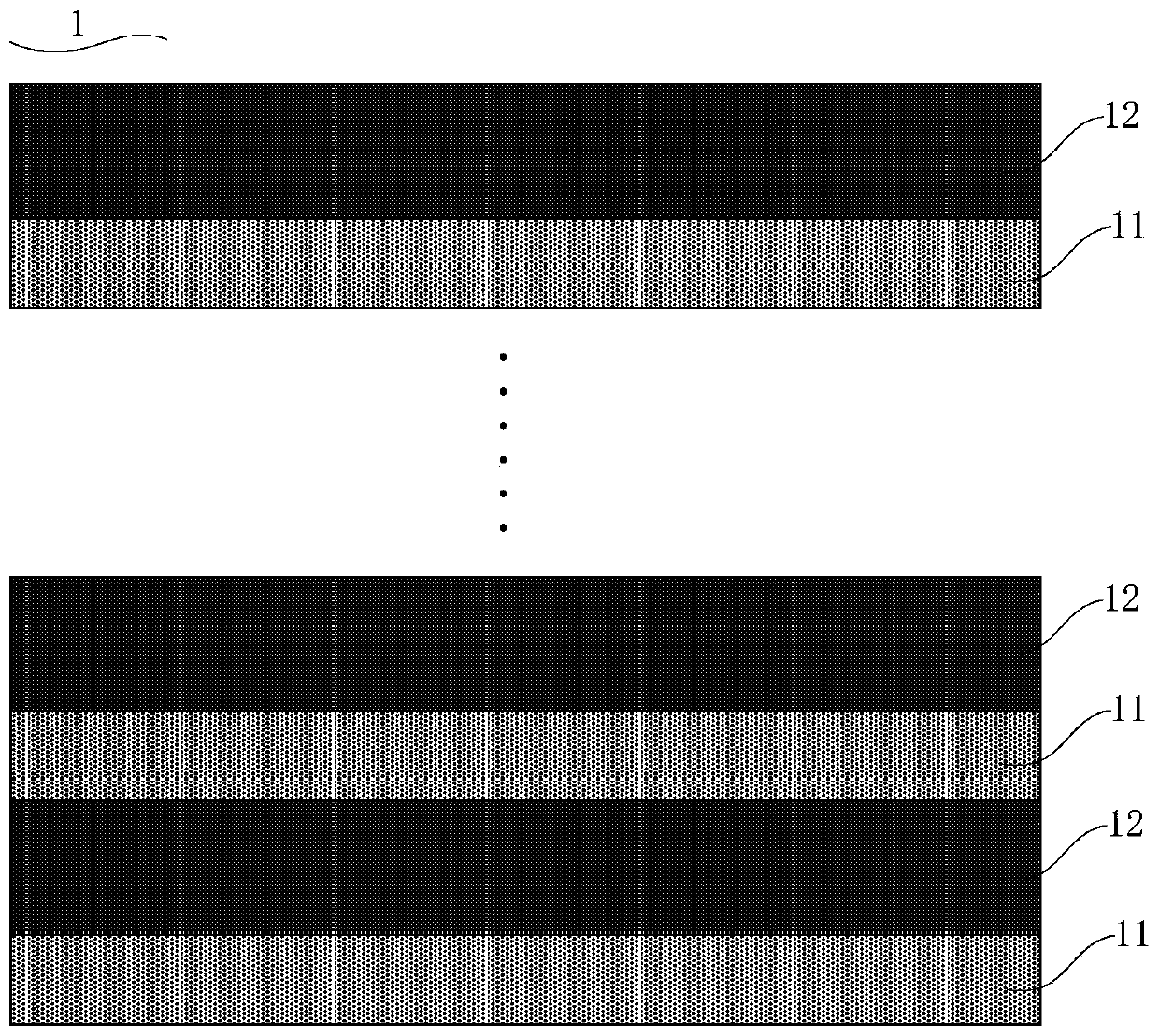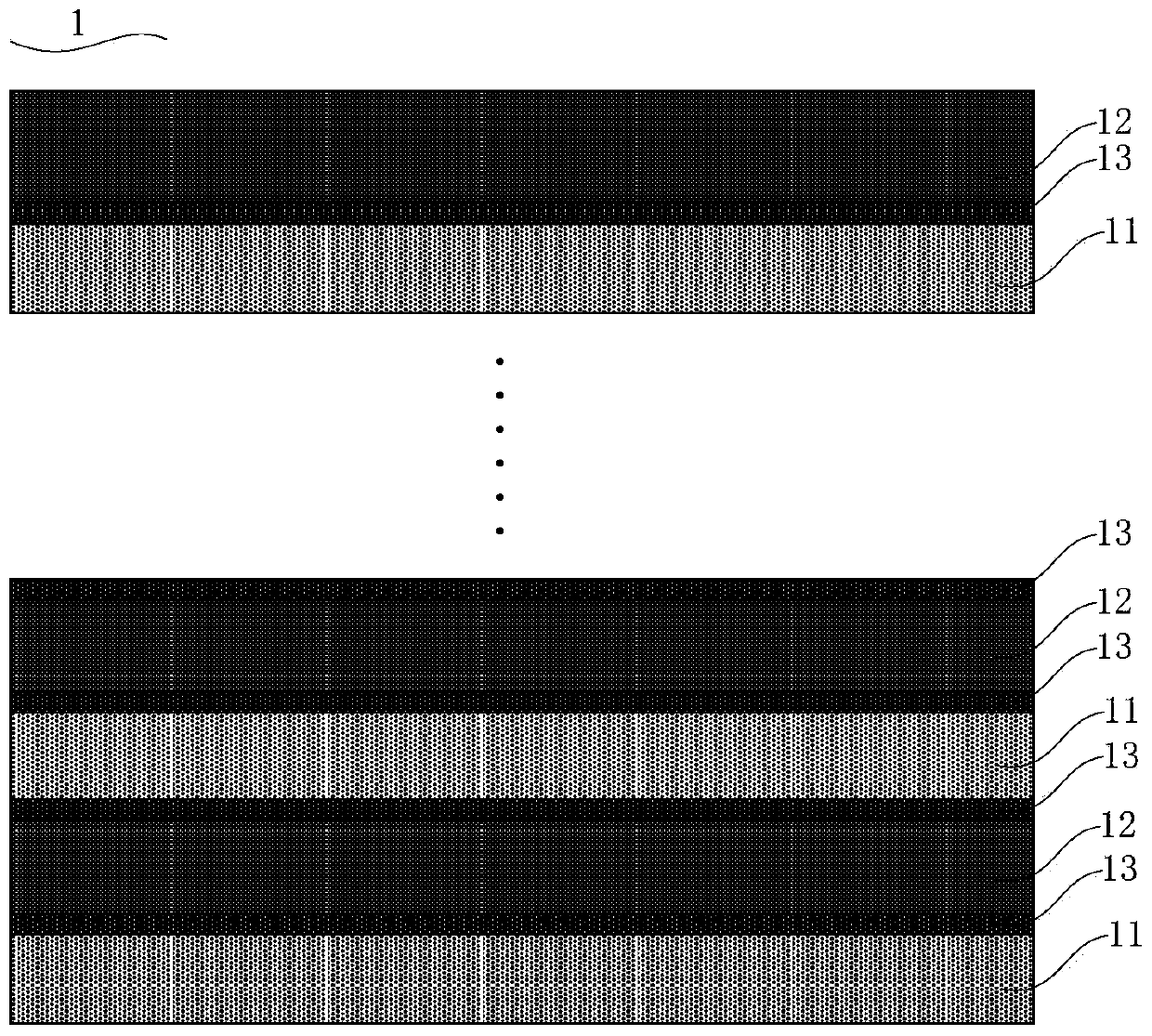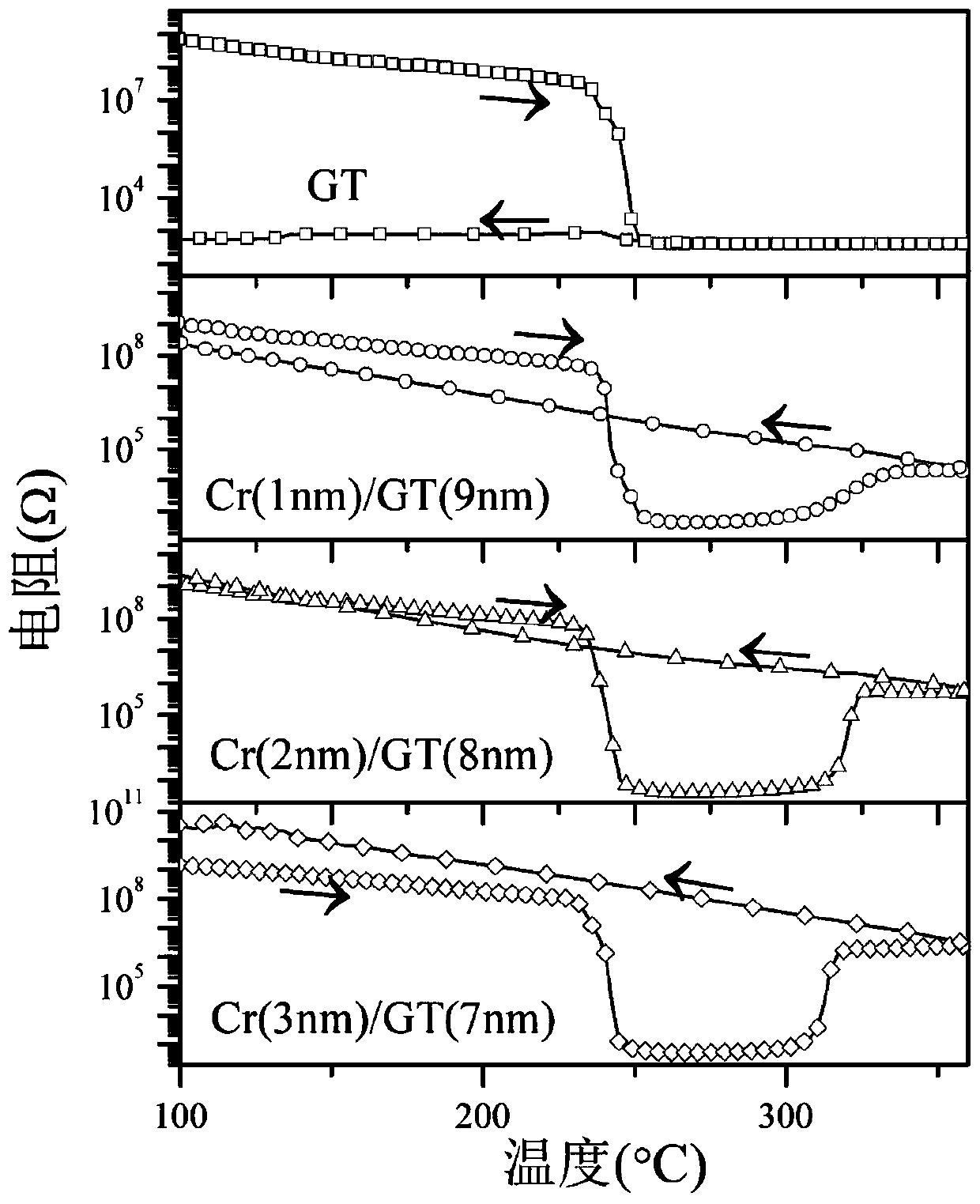Phase change thin film structure, phase change memory unit, manufacturing method thereof and phase change memory
A technology of phase-change memory and thin-film structure, which is applied in the field of phase-change memory, can solve problems such as poor reliability, reduced tolerance to noise resistance, and changes in resistance value, and achieve the effects of controllable growth process and adjustable crystallization temperature
- Summary
- Abstract
- Description
- Claims
- Application Information
AI Technical Summary
Problems solved by technology
Method used
Image
Examples
Embodiment 1
[0052] Such as figure 1 As shown, the present invention provides a phase change thin film structure 1, and the phase change thin film structure 1 comprises:
[0053] Cr layer 11;
[0054] Ge x Te 100-x layer 12, where x is the Ge x Te 100-x Atomic percentage of Ge in layer 12, 0
[0055] The Cr layer 11 and the Ge x Te 100-x Layers 12 are alternately stacked one after the other.
[0056] As an example, one layer of the Cr layer 11 in the phase-change thin film structure 1 and the adjacent layer of Ge x Te 100-x Layer 12 is called an alternately stacked cycle, and the Cr layer 11 and the Ge layer in the phase change film structure 1 x Te 100-x The number of periods in which the layers 12 are alternately stacked can be set according to actual needs, for example, the Cr layer 11 and the Ge layer in the phase change film structure 1 x Te 100-x The number of periods in which layers 12 are stacked alternately may include but not limited to 1-30.
[0057] As an e...
example 1
[0071]In this example, the Ge in the phase change thin film structure 1 x Te 100-x In layer 12, x=40, the thickness of the Cr layer 11 is 1nm, the Ge x Te 100-x The thickness of layer 12 is 9nm, and the Cr layer 11 and the Ge in the phase change film structure 1 x Te 100-x The number of periods in which layers 12 are stacked alternately is 5. At this time, the expression of the phase-change film structure 1 can be expressed as [Cr(1nm) / Ge 40 Te 60 (9nm)] 5 .
[0072] The specific preparation method of the phase-change thin film structure 1 in this example includes the following steps:
[0073] 1) Substrate (the substrate) preparation.
[0074] Select a SiO2 / Si(100) substrate with a size of 5mm*5mm, first ultrasonically clean the substrate in acetone (a purity of 99% or more) in an ultrasonic cleaner for 3 to 5 minutes, and take it out with a deionized Rinse with water; then in an ultrasonic cleaning machine, the substrate is ultrasonically cleaned in ethanol (purity a...
example 2
[0084] The expression of phase-change thin film structure 1 described in this example can be [Cr (2nm) / Ge 40 Te 60 (8nm)] 5 The rest of the preparation method are the same as example 1, the difference is: step 3) magnetron sputtering prepares [Cr(2nm) / Ge 40 Te 60 (8nm)] 5 During multi-layer composite film, the sputtering time of each layer of Cr layer 11 is 6s, each layer of Ge 40 Te 60 The sputtering time of the film was 20s.
PUM
| Property | Measurement | Unit |
|---|---|---|
| Thickness | aaaaa | aaaaa |
| Thickness | aaaaa | aaaaa |
| Phase transition temperature | aaaaa | aaaaa |
Abstract
Description
Claims
Application Information
 Login to View More
Login to View More - R&D
- Intellectual Property
- Life Sciences
- Materials
- Tech Scout
- Unparalleled Data Quality
- Higher Quality Content
- 60% Fewer Hallucinations
Browse by: Latest US Patents, China's latest patents, Technical Efficacy Thesaurus, Application Domain, Technology Topic, Popular Technical Reports.
© 2025 PatSnap. All rights reserved.Legal|Privacy policy|Modern Slavery Act Transparency Statement|Sitemap|About US| Contact US: help@patsnap.com



